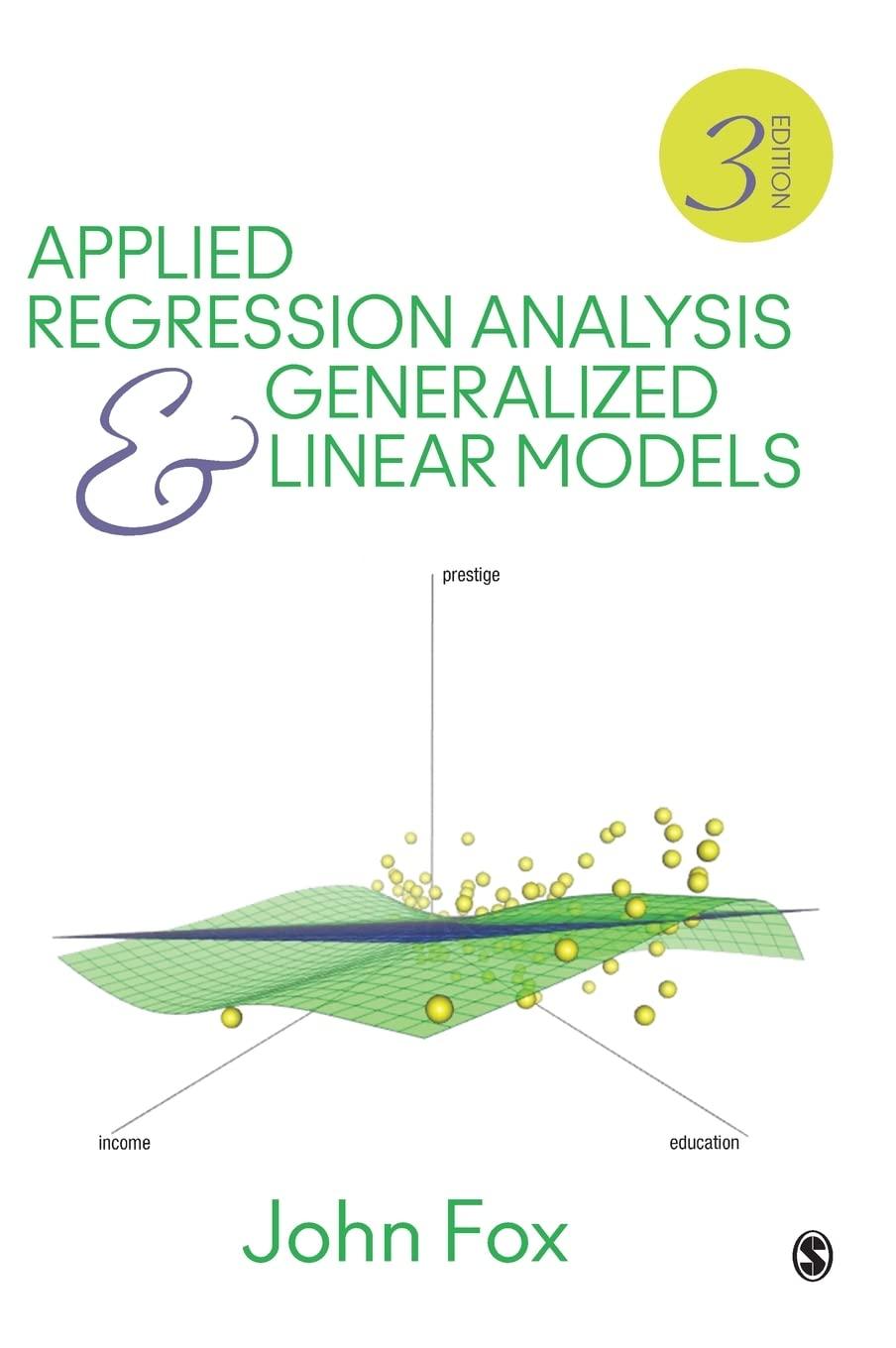Adjusted means (based on Section 7.2): Let Y1 represent the (unadjusted) mean prestige score of professional occupations
Question:
Adjusted means (based on Section 7.2): Let Y1 represent the (‘‘unadjusted’’)
mean prestige score of professional occupations in the Canadian occupational prestige data, Y2 that of white-collar occupations, and Y3 that of blue-collar occupations. Differences among the Yj may partly reflect differences among occupational types in their income and education levels. In the dummy-variable regression in Equation 7.7, type-of-occupation differences are
‘‘controlled’’for income and education, producing the fitted regression equation Yb = A þ B1X1 þ B2X2 þ C1D1 þ C2D2 Consequently, if we fix income and education at particular values—say, X1 = x1 and X2 = x2—
then the fitted prestige scores for the several occupational types are given by (treating ‘‘blue collar’’as the baseline type):
Yb1 = ðA þ C1Þ þ B1x1 þ B2x2 Yb2 = ðA þ C2Þ þ B1x1 þ B2x2 Yb3 = A þ B1x1 þ B2x2
(a) Note that the differences among the Ybj depend only on the dummy-variable coefficients C1 and C2 and not on the values of x1 and x2. Why is this so?
(b) When x1 = X1 and x2 = X2, the Ybj are called adjusted means and are denoted Yej .
How can the adjusted means Yej be interpreted? In what sense is Yej an ‘‘adjusted’’
mean?
(c) Locate the ‘‘unadjusted’’ and adjusted means for women and men in each of Figures 7.1
(a) and
(b) (on page 129). Construct a similar figure in which the difference between adjusted means is smaller than the difference in unadjusted means.
(d) Using the results in the text, along with the mean income and education values for the three occupational types, compute adjusted mean prestige scores for each of the three types, controlling for income and education. Compare the adjusted with the unadjusted means for the three types of occupations and comment on the differences, if any, between them.
Step by Step Answer:

Applied Regression Analysis And Generalized Linear Models
ISBN: 9781452205663
3rd Edition
Authors: By John Fox





